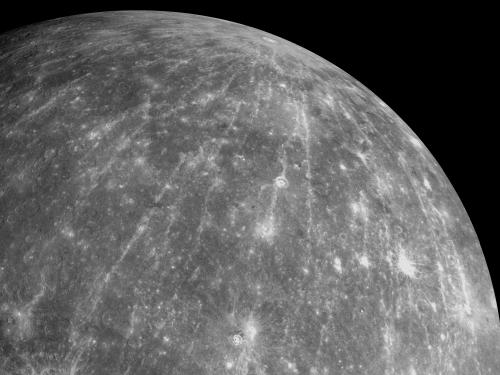
Stories of daring, stories of technological feats, stories of prevailing against the odds ... these are the stories we tell at the National Air and Space Museum. Dive in to the stories below to discover, learn, and be inspired.
Showing 471 - 480 of 1761

October 19, 2021
The first six months of testing the Ingenuity Mars Helicopter has surpassed expectations to say the least. Ginny has shown us that flight on the Red Planet is not only possible, but it may even be considered in future planetary endeavors. Explore six things we learned from the tiny Mars flyer in the first six months.
October 14, 2021
On September 25, 1912, Alberto Salinas Carranza and Gustavo Salinas Camiña received their pilot licenses from the Aero Club of America. The Salinas cousins were the first of a group of five Mexican pilots sent by their government to the United States to study at the Moisant Aviation School at Hempstead, Long Island. The photographs and correspondence found in the collection of Shakir S. Jerwan, their “profesor,” provide a unique glimpse into the early history of Mexican aviation.

October 14, 2021
Mirror, mirror under the football field, what secrets of the universe will you yield? Okay, so we’re terrible poets (except maybe Matt). But we are feeling a bit reflective these days, so we’re taking this opportunity to ponder reflecting telescopes of all sizes, shapes, and types. Reflectors use mirrors to gather light and produce an image. Some are meant for space (we’re looking at you Hubble and JWST), and others are used here on Earth. In this episode, we’re taking you into two labs – one under the football stadium at the University of Arizona that makes some of the biggest telescope mirrors in the world, and another under the house (okay, it’s a basement) of someone who makes their own telescope mirrors at home. Same deal, way different scale. We promise this one isn’t a grind!

October 10, 2021
Artist Raquel Forner became one of the earliest artists to depict outer space in paintings and continued to create images of space almost exclusively throughout her life. Forner’s humanistic vision in expressed her work which was a crucial note of optimism during the uncertain period of Cold War politics. Explore Forner's vision of space through her unique paintings.

September 29, 2021
The first high-altitude piloted balloon observation missions were launched in the late-1950s as part of the U.S. Navy’s Strato-Lab program. Between 1958 and 1959, the U.S. Navy launched four separate missions for numerous celestial observations high up in the atmosphere. Before projects like the Hubble Space Telescope was even a concept, images which were once thought to be impossible to capture were taken via telescopes carried by balloons, such as those of Operation Stargazer.

September 26, 2021
The Hubble Space Telescope and its breathtaking views of the universe exist in part because of a practice called the Decadal Survey on Astronomy and Astrophysics. The astronomy community anxiously awaits next Decadal Survey update the to see the latest recommendations from a 50-plus year process that has led to some of the most groundbreaking and iconic projects in modern astronomical history. Learn how will it direct the future of astronomical research.

September 23, 2021
100 years ago Bessie Coleman became the first African American woman to earn her pilot's license. In part because she was a woman, and especially a woman of color, Bessie had to travel all the way to Europe to get her flight training. Today on AirSpace, we're looking back on Bessie's experiences in France and Germany in the 1920s and exploring just how far she went to earn her historic license (and inspire generations of pilots along the way).

September 14, 2021
Mercury is a one-plate planet, and as the smallest of the terrestrial planets of our solar system, it has a lot to teach us about how small rocky planets evolve. Read about a perspective of Mercury has that been determined from images and data returned by spacecrafts Mariner 10 and MESSENGER.

September 10, 2021
Museum acting director Chris Browne was Airport Manager of DC's Reagan National Airport on September 11, 2001. He reflects on the tragedy, 20 years later.

September 09, 2021
Raise a glass and cheers to a new season of AirSpace! And to help us get in the celebratory mood, today's episode is about a truly intoxicating period of American history – prohibition. You might know [we didn’t] that NASCAR has its roots in bootleggers driving illicit hooch in the 1920s. But it turns out, not all bootleggers were driving their contraband around in cars. Today on AirSpace, learn how prohibition and passenger airlines went hand-in-hand.